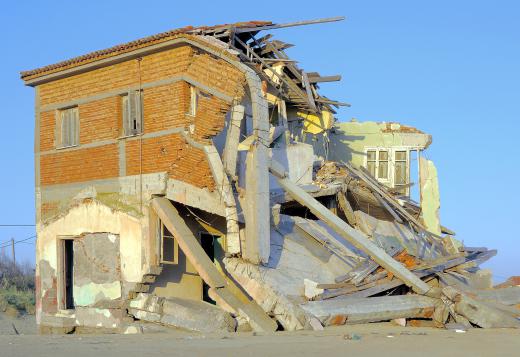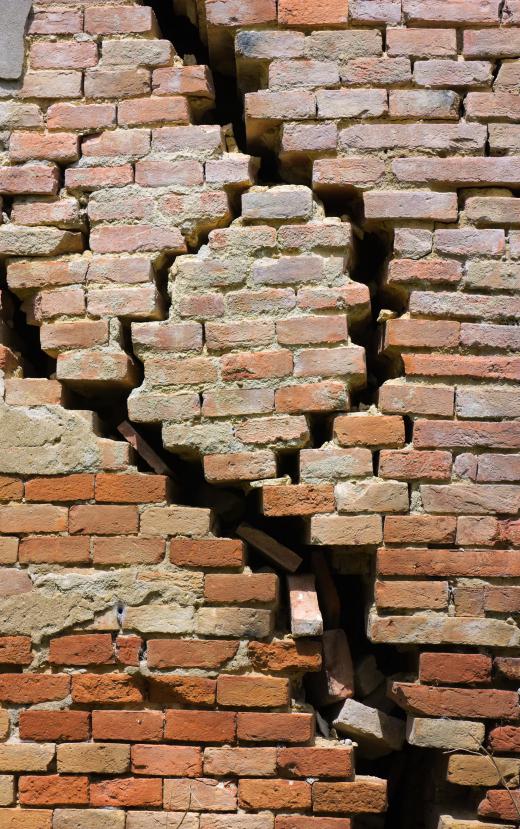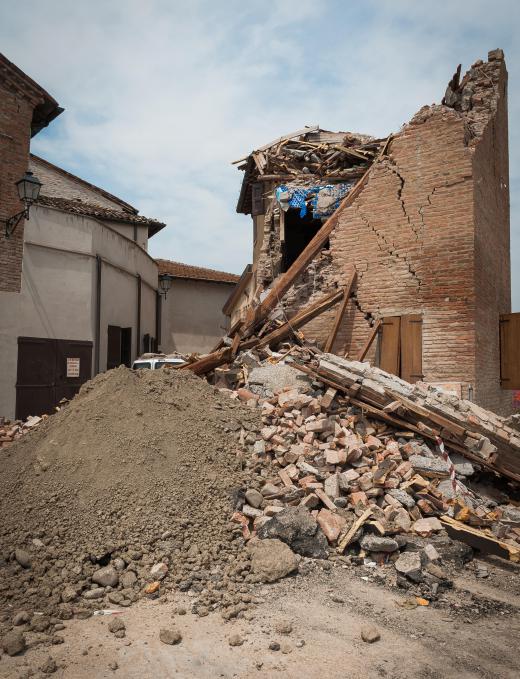Earthquake retrofitting is the process of making a building or similar structure more resilient to the stresses and forces placed on it by an earthquake or other seismic activity. This can entail a number of different procedures, though it commonly involves better connection between a building and its foundation, support for cripple walls, better resistance to lateral load, and other procedures meant to strengthen the structure. Such work is typically done prior to a major seismic event to avoid damage to a structure, and often done in areas with a history of earthquakes such as California. Earthquake retrofitting can potentially prevent expensive or dangerous damage to a building and is often performed on older buildings.
Also known as seismic retrofitting, earthquake retrofitting is typically performed by a number of workers under the supervision of a general contractor or similar construction professional. As the name implies, this retrofitting is performed on structures that have already been built, often older buildings that may have been constructed well before modern standards of safe building were established. This work can entail a number of different changes, usually based on the specific needs of individual buildings, though certain procedures are fairly common during earthquake retrofitting.

The basic goal of earthquake retrofitting is to ensure an older building is able to handle the stress and strain placed on it during a seismic event. Many older buildings were designed to simply remain upright and avoid a single force pulling on it, which consists of gravity pulling it downward. During an earthquake, however, forces that are horizontal to the ground can work on a building; this force is often called a lateral load. Retrofitting on a building attempts to ensure that these forces are not able to cause excessive damage to the building.

One of the most common forms of earthquake retrofitting is bolting a building to the foundation of the building. Many older structures will have insufficient connections between the bottom of the building and the concrete foundation beneath it. Foundation bolting usually involves bolting the sill, the effective bottom of a building, into the foundation below it. During an earthquake, the bottom of a building typically begins to shake and move side to side prior to the rest of the building doing so. This means that without earthquake retrofitting, an older building may be able to literally slide off its foundation.

Another common type of earthquake retrofitting is the support and strengthening of cripple walls, often called cripple wall bracing. The cripple walls are walls found in an area at the bottom of many buildings, often supporting a crawl space under the floor boards, that run between the foundation and main floor of the building. During an earthquake, these walls can be damaged and this can lead to a building collapsing or becoming uneven on its foundation. Cripple wall bracing creates supports that strengthen these walls and helps ensure a building will not shift during a seismic event.
